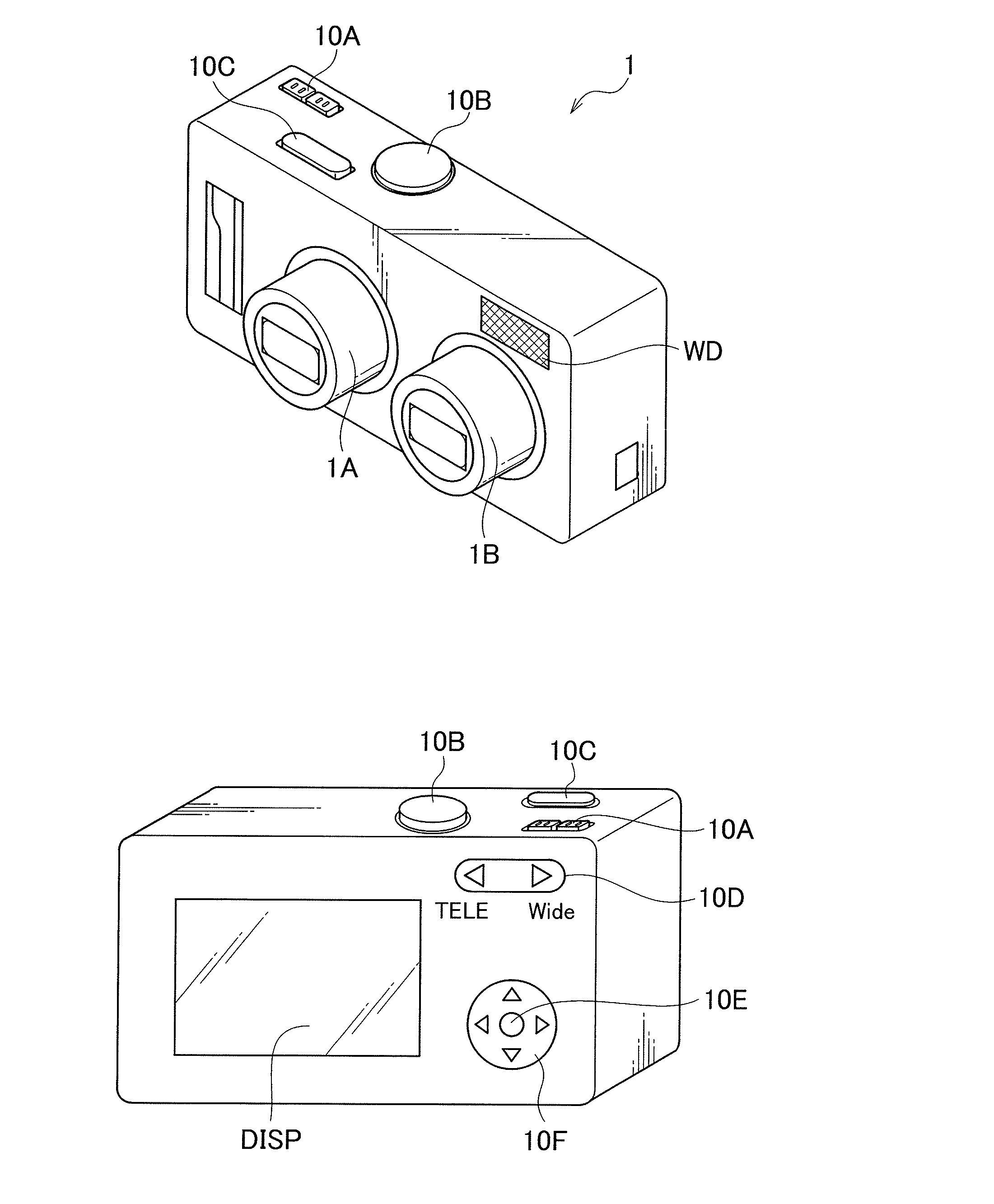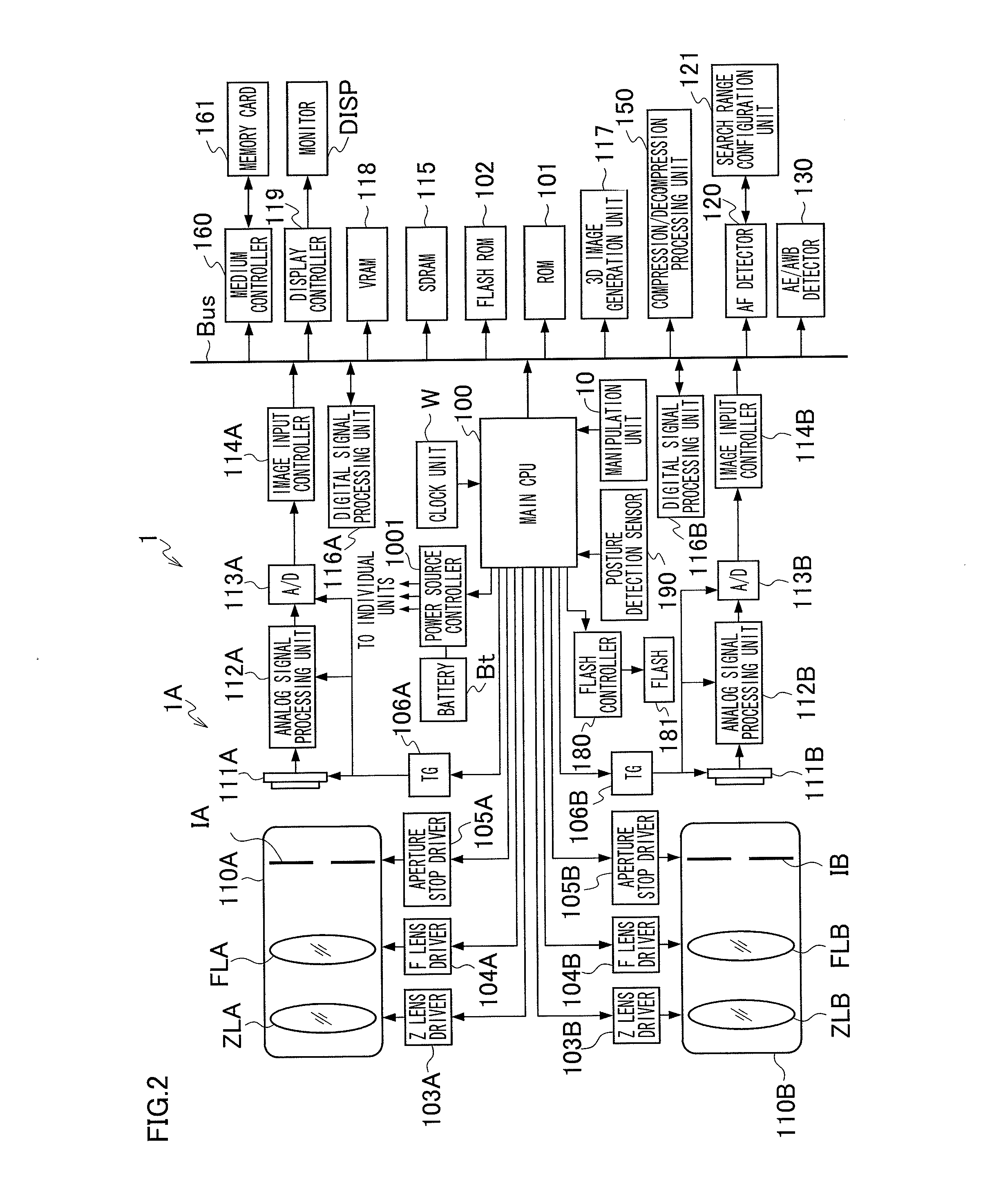Three-dimensional imaging device and autofocus adjustment method for three-dimensional imaging device
a three-dimensional imaging and autofocus adjustment technology, applied in the direction of mountings, focusing aids, instruments, etc., can solve the problems of less efficiency, small aperture, and small aperture of the other imaging unit, so as to achieve accurate focus adjustment and short time
- Summary
- Abstract
- Description
- Claims
- Application Information
AI Technical Summary
Benefits of technology
Problems solved by technology
Method used
Image
Examples
first embodiment
[0094]Next, a first embodiment of the autofocus adjustment method according to the presently disclosed subject matter is described with reference to a flowchart illustrated in FIG. 3A and FIG. 3B.
[0095]In FIG. 3A, the main CPU 100 determines whether the shutter button 10C is at a half push (step S10). In this step S10, when the main CPU 100 determines that the shutter button 10C is not at a half push, the process proceeds to the No side and repeats the step in step S10, and in this step S10, when it is determined that the shutter button 10C is at a half push, the process proceeds to the Yes side. Then, proceeding to the Yes side, in step S12, the AE / AWB detector 130 in the DSP starts the AE operation according to imaging preparation instruction from the main CPU 100, and further proceeding to step S14, where the AF detector 120 in the DSP starts the AF operation.
[0096]Upon the start of the AF operation in step S14, in step S16, the main CPU 100, at first, configures the first search...
second embodiment
Variation of Second Embodiment
[0124]FIG. 7 is a flowchart of the essential portion illustrating a variation of the second embodiment. Hereinafter, only differences from the second embodiment are described.
[0125]In the second embodiment illustrated in FIG. 6A and FIG. 6B, only the case that the second in-focus position of the second focus lens FLB is acquired in step S28 is described, whereas in the variation of the second embodiment illustrated in FIG. 7, processes in the case that the second in-focus position of the second focus lens FLB cannot be searched for are added.
[0126]Namely, as illustrated in FIG. 7, in the variation of the second embodiment, step S60 is added between step S26 and step S28 in FIG. 6A, and further, step S62 and step S64 branching from step S60 are added.
[0127]In step S60, it is determined whether or not the second in-focus position (lens position) P2 of the second focus lens FLB which comes in focus on the subject in the AF area can be detected based on the...
third embodiment
Variation of Third Embodiment
[0139]FIG. 9 is a flowchart of the essential portion illustrating a variation of the third embodiment. Hereinafter, only differences of the variation of the third embodiment from the third embodiment are described.
[0140]The variation of the third embodiment is different from the third embodiment in performing processes illustrated in FIG. 9 instead of the processes illustrated in FIG. 8B for the third embodiment.
[0141]Namely, in the flowchart illustrated in FIG. 9, step S80 and step S82 are added compared with the flowchart illustrated in FIG. 8B.
[0142]In step S80 in FIG. 9, it is determined whether or not parallax adjustment between a left image and a right image for three-dimensional view is performed.
[0143]FIG. 10A to FIG. 10C are diagrams for explaining the parallax adjustment. As illustrated in FIG. 10A, when the subject is present at the cross point position, parallax of the subject between the left image and right image hardly arises. On the other...
PUM
 Login to View More
Login to View More Abstract
Description
Claims
Application Information
 Login to View More
Login to View More - R&D
- Intellectual Property
- Life Sciences
- Materials
- Tech Scout
- Unparalleled Data Quality
- Higher Quality Content
- 60% Fewer Hallucinations
Browse by: Latest US Patents, China's latest patents, Technical Efficacy Thesaurus, Application Domain, Technology Topic, Popular Technical Reports.
© 2025 PatSnap. All rights reserved.Legal|Privacy policy|Modern Slavery Act Transparency Statement|Sitemap|About US| Contact US: help@patsnap.com



